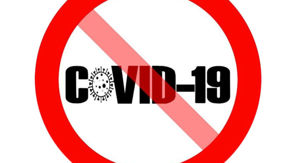Much has been written about common leadership styles and how to identify the right style for you, whether it’s transactional or transformational, bureaucratic or laissez-faire. But according to Daniel Goleman, a psychologist best known for his work on emotional intelligence, “Being a great leader means recognizing that different circumstances may call for different approaches.”
Drawing on research and experience, Goleman has identified six distinct leadership styles that managers can adapt, depending on the situations and the needs of their team members. He first introduced these styles in his 2000 Harvard Business Review article, “Leadership That Gets Results,” and they have since been widely recognized as an essential framework for effective leadership. The six leadership styles include:
- Coercive leadership style, which entails demanding immediate compliance.
- Authoritative leadership style, which is about mobilizing people toward a vision.
- Pacesetting leadership style, which involves expecting excellence and self-direction.
- Affiliative leadership style, which centers around building emotional bonds.
- Democratic leadership style, which involves creating consensus.
- Coaching leadership style, which focuses on developing people for the future.
Though the world has changed over the past two decades, these leadership styles remain relevant. Mastering them will help you navigate the complexities of different situations, boost morale, and drive your team’s long-term growth.
With that in mind, here’s a closer look at each of the six leadership styles — and when to use them — updated for today’s business landscape.
The Six Types of Leadership Styles
1. Coercive leadership style
Of all the leadership styles, coercive is the least effective in most situations, according to Goleman. It’s not difficult to understand why. This style is characterized by top-down decision making, an authoritarian approach, and a demanding, do-what-I-say attitude, he says. While this style may yield short-term results, it has a corrosive long-term impact on the company culture, leading to high employee turnover and a disillusioned, disengaged workforce.
When to use the coercive leadership style
This command-and-control leadership style may work in certain crisis situations where swift, decisive action and a clear chain of command are needed: a corporate takeover or in an emergency room, for instance. In most cases, though, this approach is likely to be detrimental, says Goleman.
2. Authoritative leadership style
The authoritative leadership style, not to be confused with authoritarian leadership, involves motivating your team members by connecting their work to a larger organizational strategy, helping them understand how their day-to-day tasks contribute to a greater purpose. It’s about setting clear guidelines; not micromanaging. It’s also about trusting your staff members to work towards the shared vision with autonomy and creativity, which creates high employee engagement and increased job satisfaction. If coercive is the worst kind of leadership, authoritative shines as the most effective and inspiring style.
When to use the authoritative leadership style
This leadership style is beneficial in lots of situations, and it’s particularly useful during times of change or uncertainty. It can also be integrated into daily operations by reminding your team members of your company’s mission in an organic way. For example, a pharmaceutical executive might say, “Our work will benefit many patients,” while an insurance leader might say, “We’re helping people secure their future.” These reminders make the organization’s goals and mission tangible and meaningful for the team.
3. Pacesetting leadership style
This leadership style involves holding yourself and others to high standards. While striving for excellence is admirable, the pacesetting approach backfires if the focus is on failures rather than successes. The constant push for productivity and results can also create a pressure-cooker work environment, says Goleman.
The extreme focus on perfection can also make it difficult for employees to see how their individual efforts fit into the bigger picture, which can lead to increased turnover. “If your best people are leaving because you’re alienating them or stressing them out, then you’re not acting in the long-term interests of your organization,” he says.
When to use the pacesetting leadership style
Although this style should be used infrequently, it can work in certain circumstances where your employees are highly motivated and exceedingly competent. It may suit specialized groups, like R&D or legal teams, for instance. But even in these cases, it’s important to balance pacesetting with other approaches to avoid consequences like employee burnout.
4. Affiliative leadership style
This leadership style involves building strong emotional bonds, creating a sense of camaraderie and team spirit, and fostering a positive and supportive workplace. This helps team members feel like they belong, can freely share ideas and feedback, and work together towards common goals.
According to Goleman, this relationship-oriented style is especially valuable in shaping a positive work environment, which is particularly important at a time when some companies are calling employees back to the office. You can create a caring, cohesive community rather than an administrative machine by getting to know your employees on a personal level and celebrating their wins, he says.
When to use the affiliative leadership style
This style builds connections and creates a positive company culture, but it should not be used in isolation. It may not provide sufficient feedback to address performance issues or deal with complex challenges. Combining this approach with the inspirational, authoritative style creates more balance by offering both support and direction.
5. Democratic leadership style
The democratic leadership style involves empowering your team to have a voice in decision-making. By taking the time to gather input, listen to concerns and diverse perspectives, and incorporate feedback, you show your team members that their opinions matter, their voices are heard, and their contributions are valued. This gives them a sense of ownership and responsibility.
When to use the democratic leadership style
This style is ideal when you’re unsure about the best course of action and want to generate ideas. But it’s not a good strategy when your team members lack experience or information, or in times of crisis.
6. Coaching leadership style
The coaching style is focused on individual growth, and involves dedicating time to understand your team members’ long-term goals, both for their personal and professional development. “Asking questions like, ‘What do you want from your life, your career, this job? And, how can I help you?’ encourages your employees to reflect on their aspirations and work towards achieving them,” says Goleman. By taking a genuine interest in their development, you help your employees feel valued and motivated.
When to use the coaching leadership style
This style is especially useful during one-on-one performance evaluations, but you can also slip it into everyday conversations, he says. A leader in coach-mode might say, “You’re great at XYZ, but when you do ABC, it doesn’t work as well because of these reasons. Have you considered trying this other approach instead?” This real-time feedback helps employees grow and learn, rather than letting potential problems linger.
How to Adapt Your Leadership Style to Fit the Situation You’re In
Research suggests that the most effective leaders adapt their style to different circumstances — be it a change in setting, a shift in organizational dynamics, or a turn in the business cycle. That’s why you need to stay attuned to your environment, understand your impact on others, and adjust your approach accordingly.
As Goleman writes in his 2000 article, “The most effective leaders switch flexibly among the leadership styles as needed…[They] don’t mechanically match their style to fit a checklist of situations — they are far more fluid. They are exquisitely sensitive to the impact they are having on others and seamlessly adjust their style to get the best results.”
This is how switching styles looks in real life: When launching a new project, you would use an authoritative style where clear direction and a compelling vision are needed to bring the team together and inspire people toward a common goal. You would switch to a coaching style when an employee is struggling with a certain task and you need to help them learn a new skill. And you would employ a pacesetting style when your team of driven and experienced employees needs to meet a challenging deadline.
But what if you feel like you’re not equipped to take on a new and different leadership style — let alone more than one?
Goleman says that anyone can expand their range of leadership styles through dedicated practice and repetition. He also recommends focusing on growing your emotional intelligence, “To expand [their style repertories], leaders must first understand which emotional intelligence competencies underlie the leadership styles they are lacking,” he writes in his 2000 HBR article. “They can then work assiduously to increase their quotient of them. For instance, an affiliative leader has strengths in three emotional intelligence competencies: in empathy, in building relationships, and in communication… Such advice about adding capabilities may seem simplistic — ‘Go change yourself’ — but enhancing emotional intelligence is entirely possible with practice.”
. . .
The good news is that personality is not destiny. Even if you’re naturally introverted or you tend to be driven by data and analysis rather than emotion, you can still learn how to adapt different leadership styles to organize, motivate, and direct your team.
“A leader’s success depends on the productivity and effectiveness of the people who work for them,” Goleman says. “You’re shooting yourself in the foot if you use a style of leadership that’s counterproductive to their performance.”











